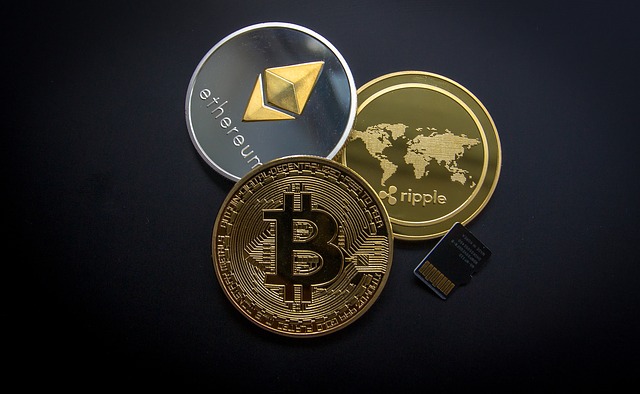The cryptocurrency market exploded towards the end of 2017, and even though 2018 started off with an uncomfortable slump, with a total market value of over $400 billion we are still well above a total market value of most of 2017. With all these new investors and new capital pouring into the market, a strong increase in competition is bound to happen.
Where once you could blindly invest money in almost any top 100 cryptocurrency, this has become an unsustainable strategy, especially for the coming years. Information is spreading at an increasingly rapid rate, but reliable, quality information is becoming more and more scarce.
However, you probably still want to find that one cryptocurrency that can outperform them all. This article will help you in the process of finding this one or multiple winning investments, by identifying 3 foundational factors that contribute to the likelihood of a cryptocurrency succeeding. These factors will aid you in the most important aspect of investing in cryptocurrencies: always doing your own research.
1. Intrinsic Value
The best place to start is to try and assess the current intrinsic value of a particular cryptocurrency. Because of the current state of the technology, this is more of an art than a science. However, when conducted thoroughly, it will give you a clear picture of the risk involved in investing in a particular cryptocurrency. Cryptocurrencies’ intrinsic values can be surmised from the services they provide today.
The higher the intrinsic value of a cryptocurrency, the less risk involved in investing in it. However, this should come with a disclaimer, as the market is still highly speculative: the true intrinsic value of almost every cryptocurrency is yet to be determined.

Is the Cryptocurrency Actually Used?
Do people need this cryptocurrency? If the answer to that question is yes, that cryptocurrency has a far more solid basis than most cryptos out there. Bitcoin’s network is rapidly expanding, and its members are using Bitcoin for payments to each other. Even though Bitcoin has been dropped as a method of payment due to its volatility by several companies, payments within the blockchain industry are still done through the use of Bitcoin. Like, for example blockchain company salaries, crypto advertising space and blockchain related services. Bitcoin, and Ethereum and NEO too, are needed to buy into the ICOs built on their blockchain. Cryptos like Steem, Edgeless, and Lunyr are needed to make proper use of their platforms.
These are examples of cryptocurrencies that are actually needed to access a specific product or service. Most cryptos, however, are not needed yet (at least at the time of this writing), because the application or platform is not yet operational. Still, the blockchain industry is rapidly developing, and a lot of cryptocurrencies that are not needed right now will likely be in demand at some point in the near future. Nonetheless, in the interest of mitigating the risk of investing in cryptocurrencies, those cryptos that already have a practical use in our lives make a much safer investment.
A website like Block’tivity provides statistics on which blockchains are actually being used by measuring the number of transactions on each blockchain.
Partnerships
If you find a cryptocurrency that you believe in, that’s great and all… but the confirmation that a multinational corporation shares your belief and is willing to stand behind that cryptocurrency is exactly what you want. These big companies heavily scrutinize the company behind a blockchain and cryptocurrency before entering a partnership. Once a partnership between the company and platform has been established, you can expect serious research and development to be conducted on that cryptocurrency.
Moreover, big partnerships function as a bridge for cryptocurrencies to the real world. With most people not understanding blockchain, it’s difficult for cryptocurrencies and blockchains to become integrated in the economy without powerhouse corporations breaking the ice for them.
Once you have your eye on a crypto that has joined forces with a company, be sure to assess what has been agreed upon in the partnership. Ask questions like, has the company devoted capital and/or resources to the project? Is there a contractual agreement presented? Is the company getting actively involved with the cryptocurrency or just observing from the sidelines?
Scalability (Cheap + Fast)
Even though a fair amount of new investors don’t seem to care too much about the actual technology behind a project, it hasn’t gone unnoticed that Bitcoin is having scalability issues. The same goes for Ethereum, on which the minor application Cryptokitties has already caused a lot of network congestion.
Does this mean that blockchain technology is not ready yet for mass adoption? Not necessarily. It just displays the shortcomings of the most well-known blockchains. However, newer and more advanced blockchain projects have had time to address the issues common in the more mainstream platforms, and they’ve been able to develop solutions.
The current users of blockchain technology and its applications are still early adopters, which implies they are quite tech-savvy. These people are used to high-speed connections, absence of loading times, and seamless functionalities. Lagging and buggy technologies will not persuade them, let alone non-techies, to start using blockchain applications. Blockchains that are capable of providing scalability are far more likely to be used in the future. Whether the established but slow blockchains can upgrade enough to outcompete the newcomers has yet to be seen, but scalability is definitely a factor to keep a close eye on.

2. Protocol Coins Versus Utility Tokens
When looking for your next winning cryptocurrency, it’s important to realize the difference between protocol coins and utility tokens. A protocol coin is a cryptocurrency that accompanies a blockchain on which blockchain applications can be built. Examples of these are Ethereum, NEO, Cardano, Lisk, Waves, and Bitshares.
The applications that are built on top of these blockchains issue a utility token, with which you can make use of these applications. VeChain, for example, is a utility token built on top of the Ethereum blockchain, and Deepbrain Chain is built on the NEO blockchain. There are many more like these two utility tokens, and eventually there’ll likely be far more utility tokens than there will be protocol coins.
Every application built on a blockchain adds value to that blockchain. And, inversely, the more applications that are built on a blockchain, the more people will become potential users of every application on that blockchain. So because, say, Ethereum has more and more to offer based on its applications, more people will start using the Ethereum blockchain, which will expose them to all the Ethereum ecosystem has to offer. Therefore, the more high-quality applications that are created on the Ethereum blockchain, the more Ethereum will be worth.
This means that investing in protocol coins comes with less risk than investing in utility tokens. When you invest in protocol coins/blockchains, the return of your investment will be determined by the growth of the ecosystem of that blockchain, and the only risk lies in the disappearance of that entire ecosystem. When you buy utility tokens, your return is based on whether or not people use the specific application that particular token was created for – your risk there is that nobody will use it. Even if the protocol an application is built on is widely used by the masses, one single application can easily not be.
So why invest in utility tokens at all? Why not only invest in protocol coins? Well, even though utility tokens have a much higher risk, they also have an enormous upside potential. We are still waiting for the “killer app” of blockchain, which is the term used for an application that catapults a technology into mainstream. The “killer app” for blockchain technology will be an application of blockchain technology that is that much more convenient or desirable than anything currently in existence that it drives the masses towards using blockchain. Such a killer app will be an application, and consequently a utility token.
Thus, when taking protocol versus utility into account, there are a few important things you have to assess. Do I want to invest in protocols or in utilities? Is the protocol blockchain you want to invest in better than other protocol blockchains? On which protocol is a utility token built? Is there already a similar application on that protocol? Is there synergy between this application and the other applications on that blockchain?
3. Potential Demand
In the long run, the value of a cryptocurrency is determined by its usage. Momentarily, most of the market is still highly speculative, and most cryptocurrencies are solely used for trading. They are being traded for the potential of future returns, which is based on the expectations about whether a crypto will be used or not.
So one thing you have to ask yourself is: will there be demand for this crypto based on its use case, and how big is the group of potential users?
As an example, I want to take Iconomi’s cryptocurrency ICN. I have nothing against Iconomi, and I think their platform is an incredibly well rolled out concept that has already proven itself to be valuable. However, their ICN cryptocurrency is used as a security. This means that the ICN token is used to finance the company’s activities, and holders of the token are being rewarded for investing in Iconomi by the company’s increasing value. The company behind the Iconomi platform will then buy back ICN tokens from the market with the profits it has made.
This means that ICN has no actual use case, which puts a serious brake on the potential demand for the token. This is a shame, as you can use cryptocurrencies for so much more than just as securities. Sure, the demand will go up as Iconomi continues to grow, but this demand will only be based on profit-seeking. When looking for a true winning cryptocurrency, you want the crypto to actually serve a purpose. When it does, and when the application for which it’s used is widely adopted, the coin’s price will shoot up because people actually need to use it to access particular services. And, because the savvy investor will understand this principle, they too will increase demand for a usable cryptocurrency.
Another determining factor for potential demand is the industry a token is targeting. This only applies to blockchain applications/utility tokens, since protocol blockchains allow for all kinds of applications. The potential demand of a utility token is limited to the value of the industry its targeting, while the potential demand of a protocol coin doesn’t really have limitations. That being said, there are also plenty of utility tokens targeting a wide variety of industries. Make sure you clearly assess the potential reach of each cryptocurrency you’re looking at.
Competition is awesome, especially in such a truly free market as the cryptocurrency space. Always keep in mind, though, that almost no industry is made up by a single organization. An idea doesn’t have to be unique, per se, because there are so many different blockchain ecosystems being built. For example, when it comes to an online marketplace, the US uses eBay, while China uses Alibaba – a similar scenario is to be expected for blockchains, say, Ethereum for the US and NEO for China. Both blockchains already have an identification application – Civic and TheKey, respectively – which can easily co-exist.
Concluding Remarks
Protocol coins that already have an existing user base, partnerships, and a scalable blockchain, plus a huge potential group of users, seem like the safest bet when it comes to making a winning crypto investment. There are quite of few of these coins, with more being created all the time, and the quality of the applications built on these protocols will ultimately point out the true winners.
There is always the possibility that one of these applications will turn out to be a true killer app, the one blockchain application that makes the technology a household name. Finding this application comes with high risk and will take a lot of research and assessment, but I, for one, will definitely join in the search.

